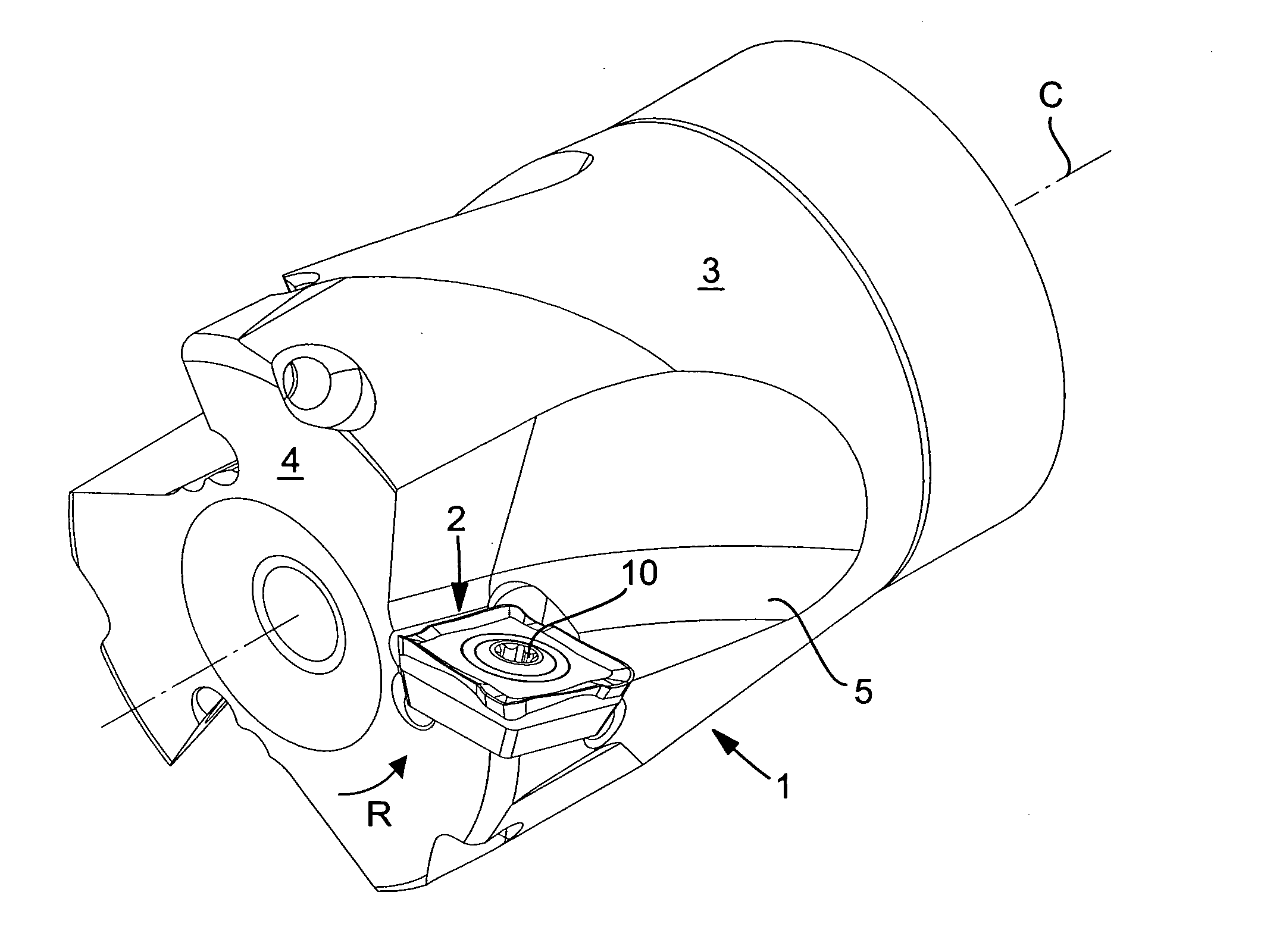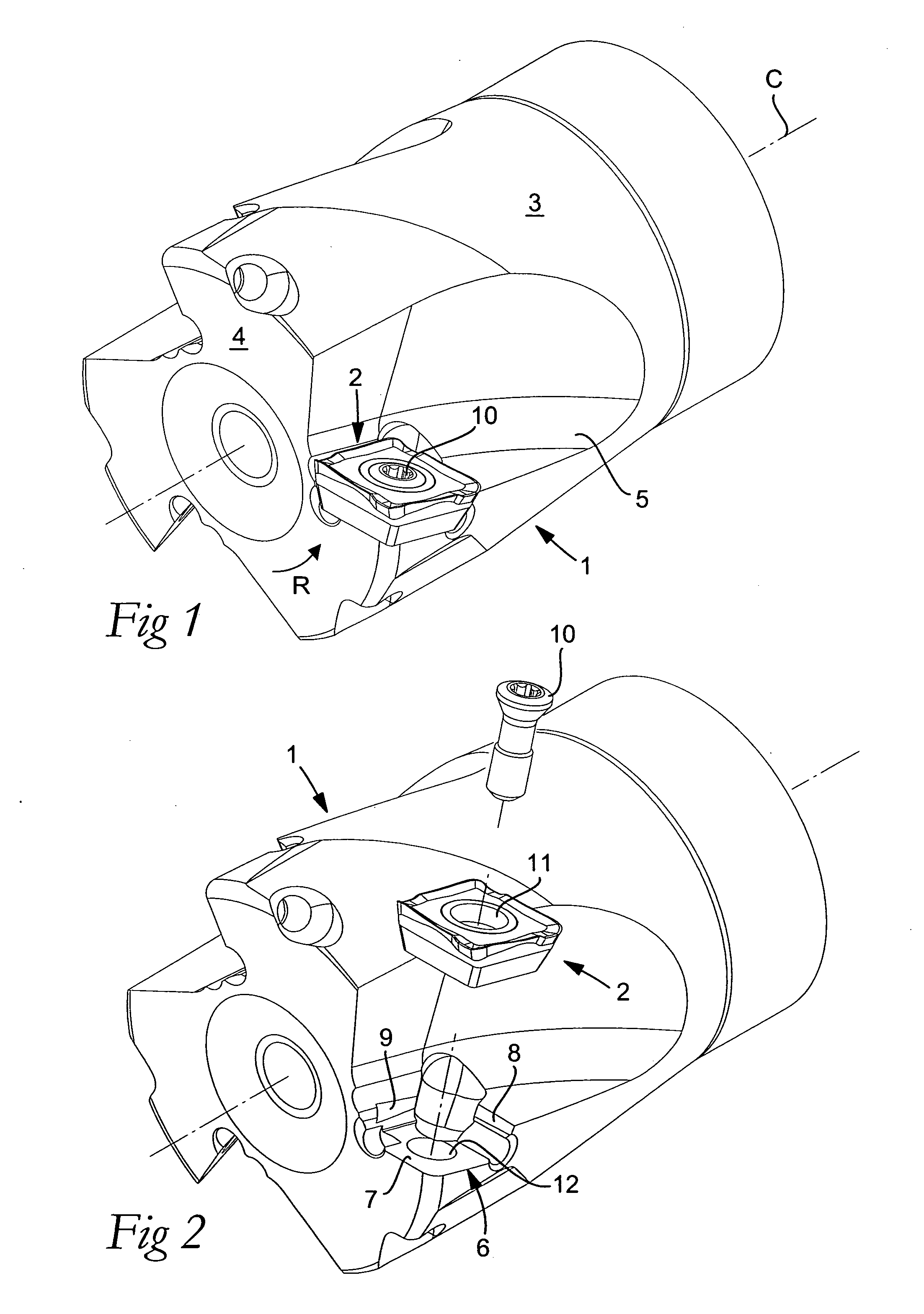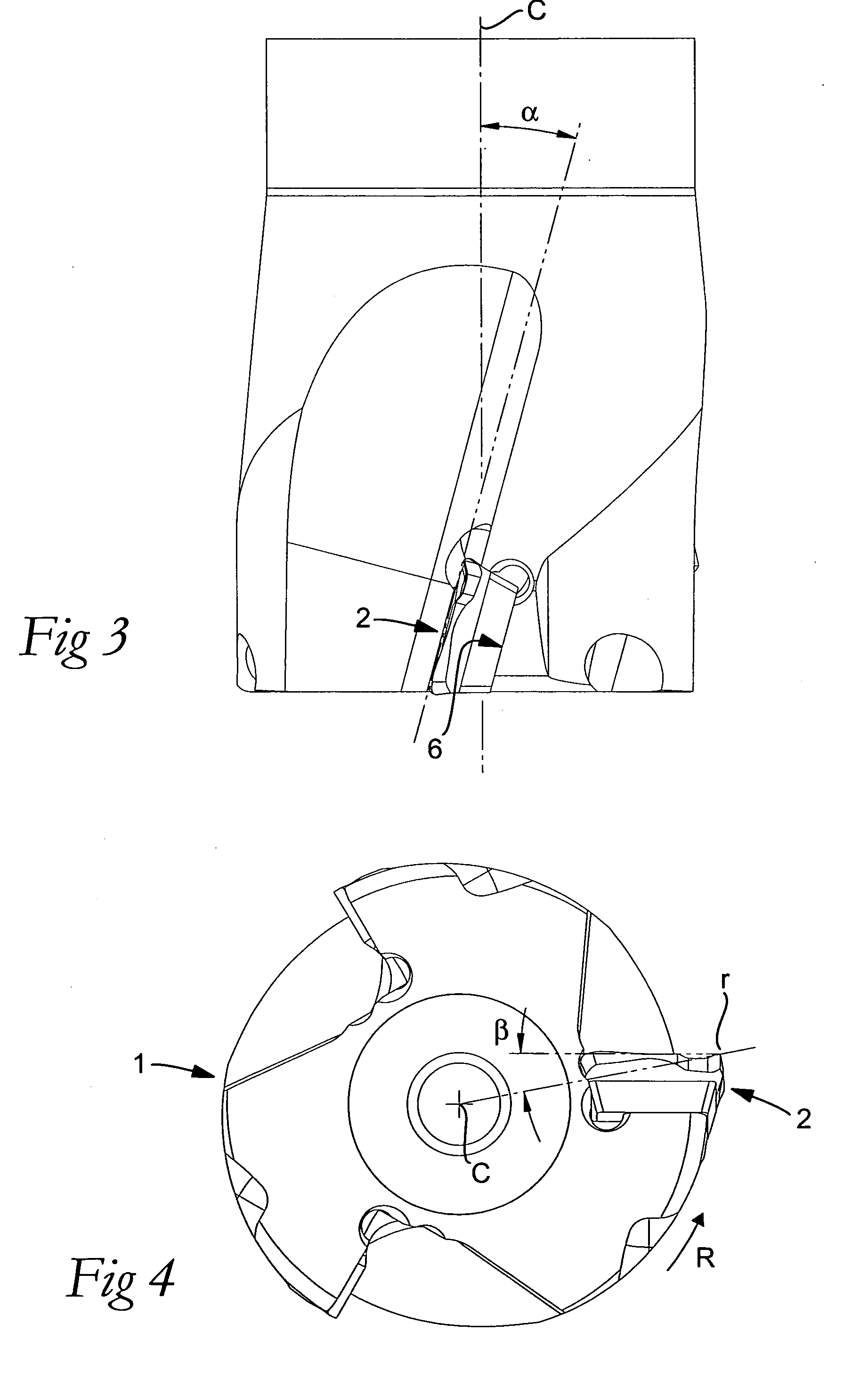Indexable end-milling insert
a technology of endmilling insert and indexing, which is applied in the direction of shaping cutters, manufacturing tools, transportation and packaging, etc., can solve the problems of insufficient two solutions in certain respects, difficult to master one of them, and only two usable cutting edges in the cutting insert, etc., to achieve good chip formation, long service life of the cutting insert, wear evenly and slowly
- Summary
- Abstract
- Description
- Claims
- Application Information
AI Technical Summary
Benefits of technology
Problems solved by technology
Method used
Image
Examples
Embodiment Construction
[0033]Below, a preferred embodiment of the cutting insert according to an embodiment of the invention will be described in detail, reference being made to the different drawing figures. First, a milling or basic body co-operating with the cutting insert will be described in more detail, and then the cutting insert as such.
[0034]The assembled milling-cutter tool shown in FIGS. 1-4 includes a basic body 1 and a plurality of cutting inserts 2, only one of which is shown in the respective figure. The basic body or the milling cutter body 1 is rotatable in the direction of rotation R around a center axis designated C, and has as a rotationally symmetrical envelope surface 3, as well as a front end surface 4. In the envelope surface as well as the end surface, a number of chip pockets 5 open, each one of which includes an insert seat 6 for the receipt of a cutting insert 2. In the example, the number of chip pockets and cutting inserts, respectively, is three.
[0035]In this case, the inser...
PUM
| Property | Measurement | Unit |
|---|---|---|
| Angle | aaaaa | aaaaa |
| Angle | aaaaa | aaaaa |
| Distance | aaaaa | aaaaa |
Abstract
Description
Claims
Application Information
 Login to View More
Login to View More - R&D
- Intellectual Property
- Life Sciences
- Materials
- Tech Scout
- Unparalleled Data Quality
- Higher Quality Content
- 60% Fewer Hallucinations
Browse by: Latest US Patents, China's latest patents, Technical Efficacy Thesaurus, Application Domain, Technology Topic, Popular Technical Reports.
© 2025 PatSnap. All rights reserved.Legal|Privacy policy|Modern Slavery Act Transparency Statement|Sitemap|About US| Contact US: help@patsnap.com



